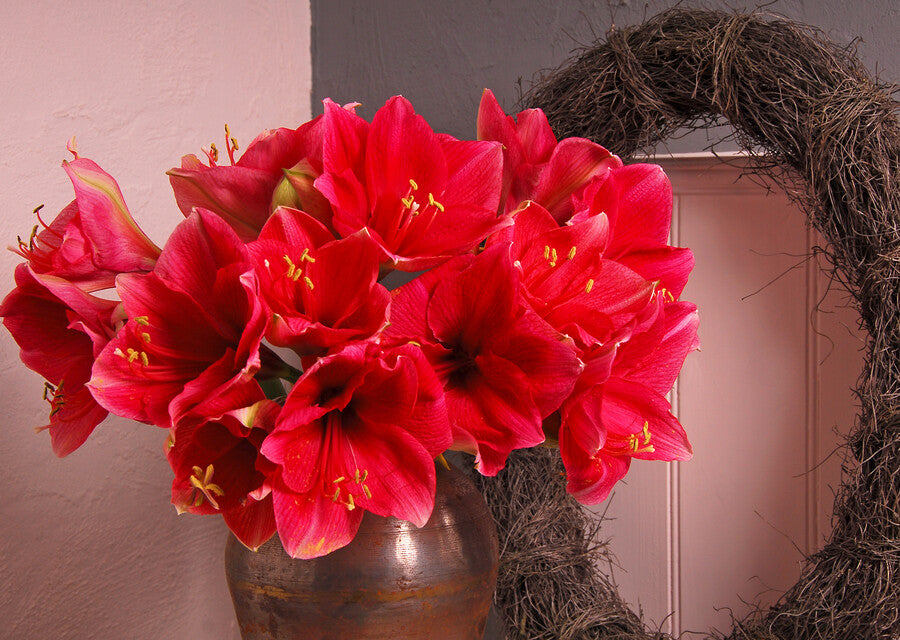Planting and Care
Caring for Amaryllis
Proper care will keep your Amaryllis healthy and ready to bloom beautifully each year. Water it when the top inch of soil feels dry, making sure the bulb never stands in excess water. During active growth, feed the plant once a month with a balanced fertilizer to support strong stems and large flowers. After blooming, remove the faded blossoms — this allows the bulb to save energy for the next cycle. Healthy green leaves should be left in place, as they play a vital role in recharging the bulb.
- Light: Amaryllis thrives in bright, indirect sunlight indoors and enjoys full sun when placed outdoors in summer.
- Temperature: Keep it warm during growth (18–24 °C), then give it a cooler rest period to prepare for reblooming.
- Repotting: Refresh the soil every 2–3 years to provide nutrients and space for healthy root development.
With these simple steps, your Amaryllis will not only stay vibrant but also return with even more spectacular blooms in the following seasons.
Key Tips for Successful Amaryllis Care
- Avoid overcrowding: Space your bulbs appropriately if planting outdoors or in large containers to ensure good air circulation.
- Ensure proper depth: When planting, ensure the top third of the bulb remains above the soil surface to allow for optimal growth.
- Be patient: It may take a few weeks for your Amaryllis to bloom, but once it does, the results are well worth the wait.
- Prevent disease: Regularly inspect the plant for any signs of pests or disease. If you notice wilting or discolored leaves, ensure proper
How to Make Amaryllis Rebloom
To encourage your amaryllis to bloom again after it has finished flowering, it’s essential to allow it a proper rest period. Once the flowers have faded, cut them back and gradually reduce watering. The bulb should then be placed in a cool, dark spot for about 6–8 weeks. After this dormancy, move the plant to a warm, bright location and resume regular watering and care. This cycle helps the bulb restore its strength and produce new blossoms, and when followed correctly, it can even lead to multiple blooming periods within a single year.




